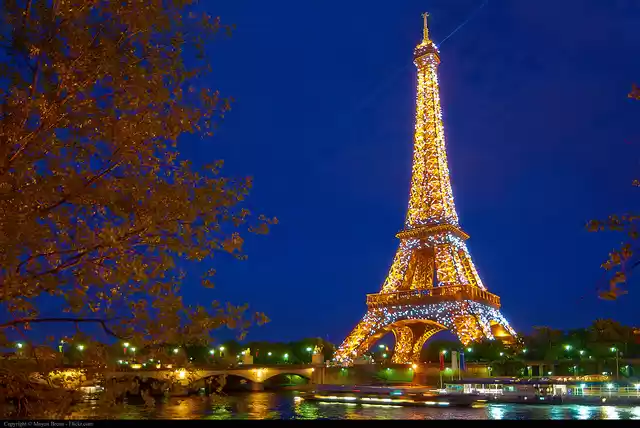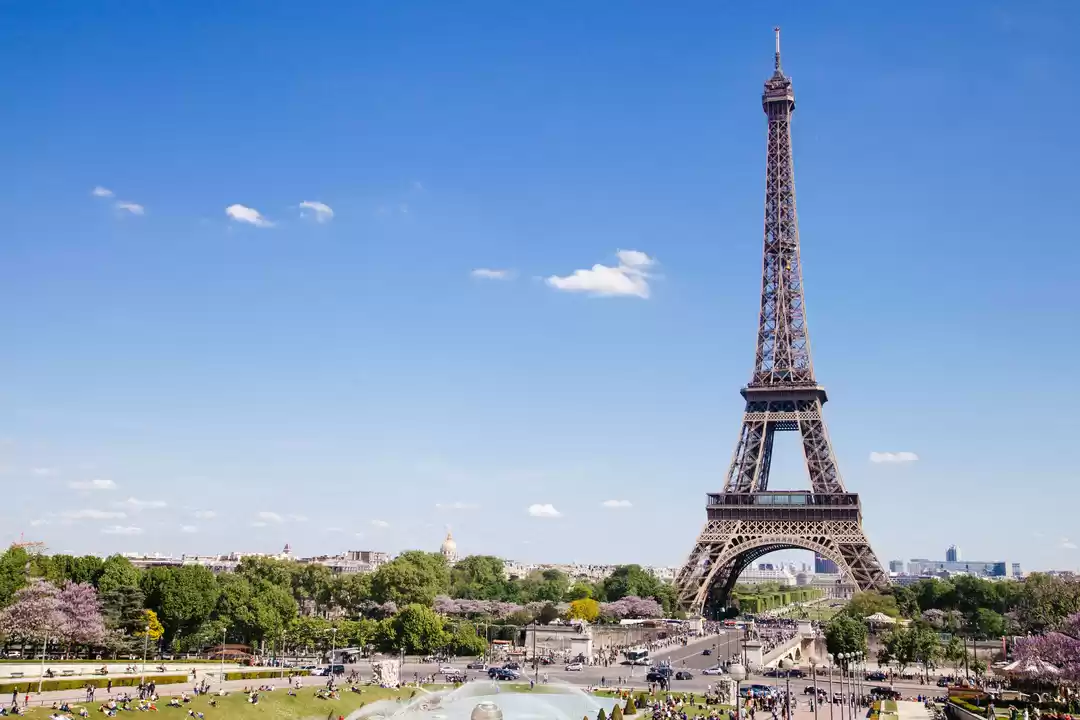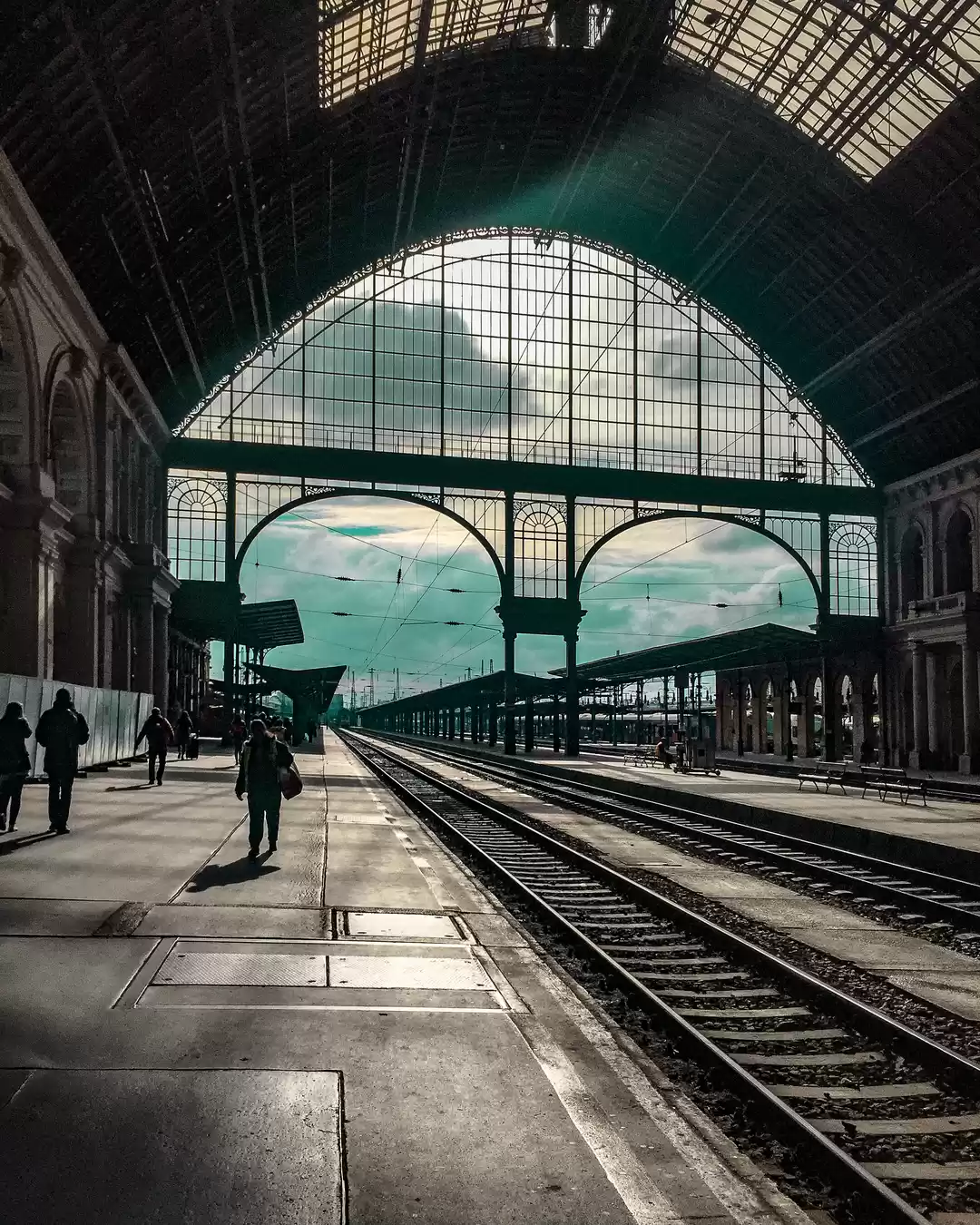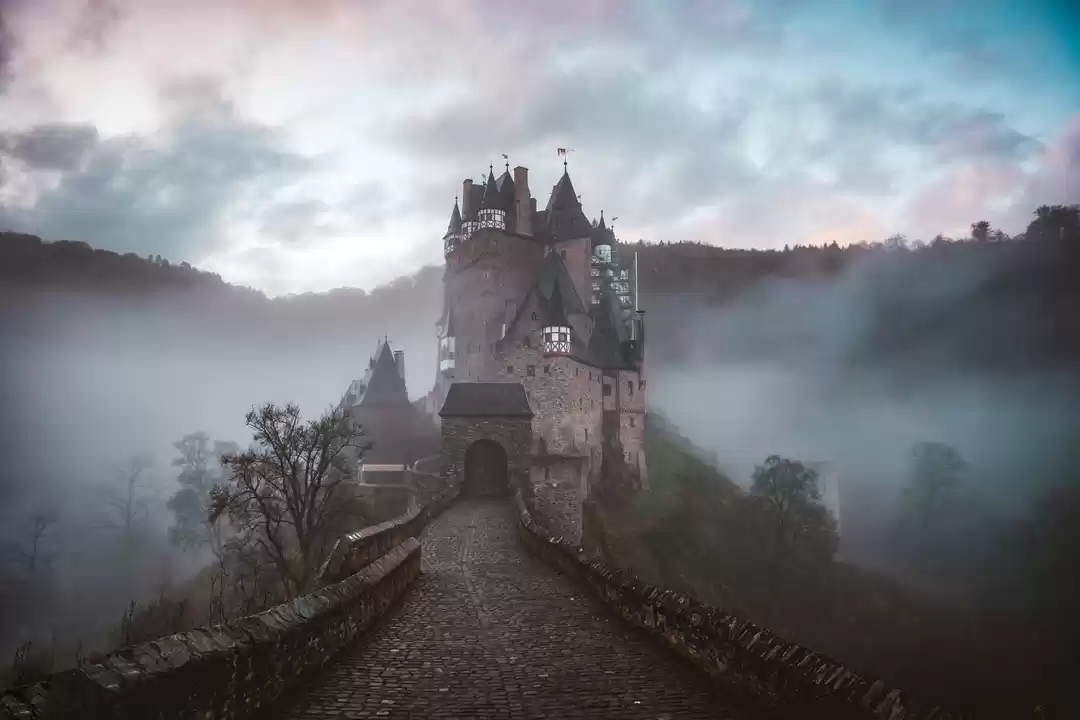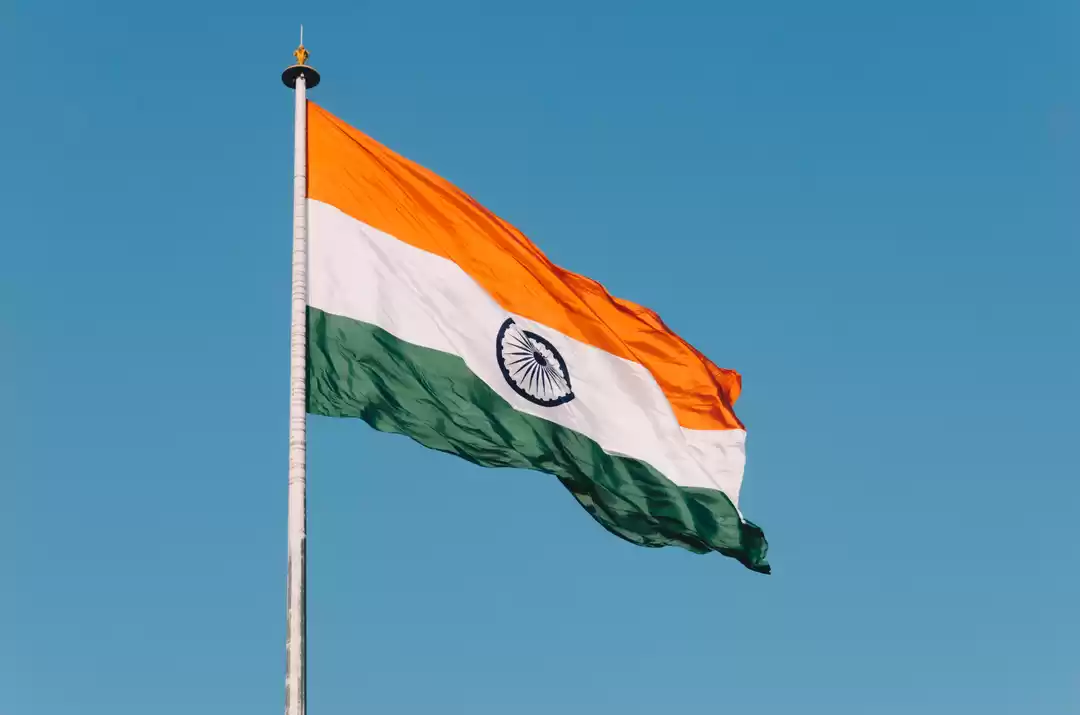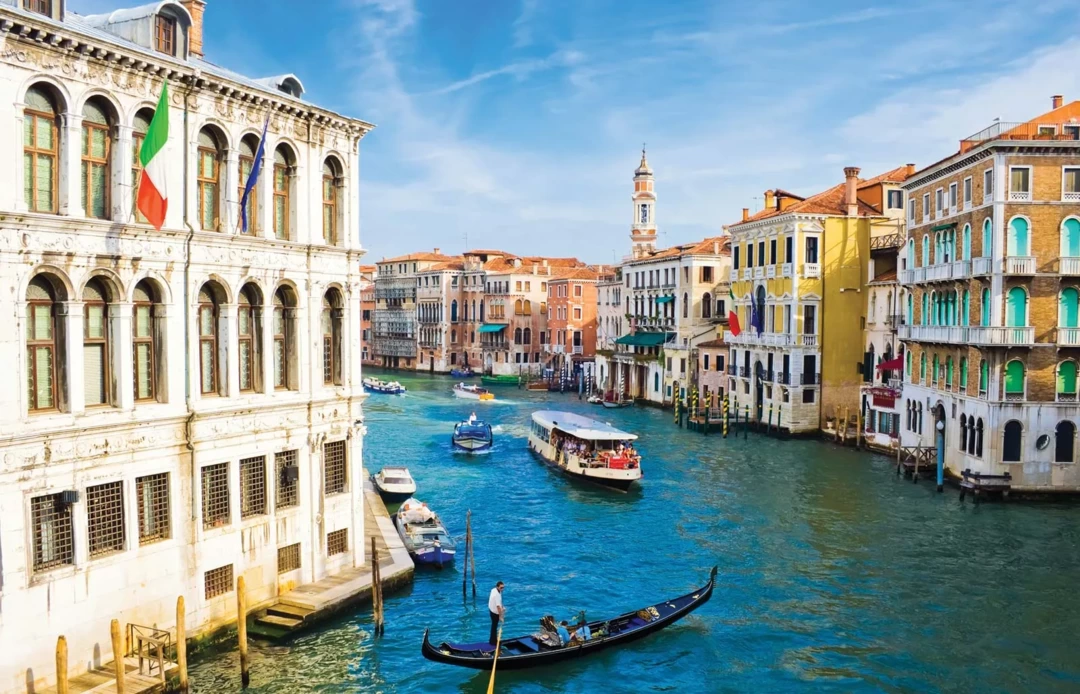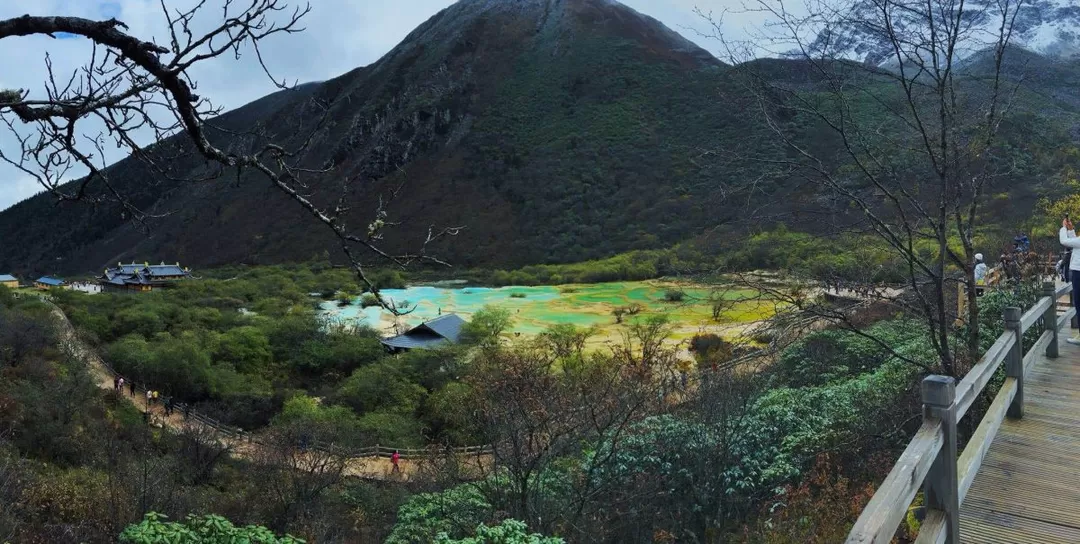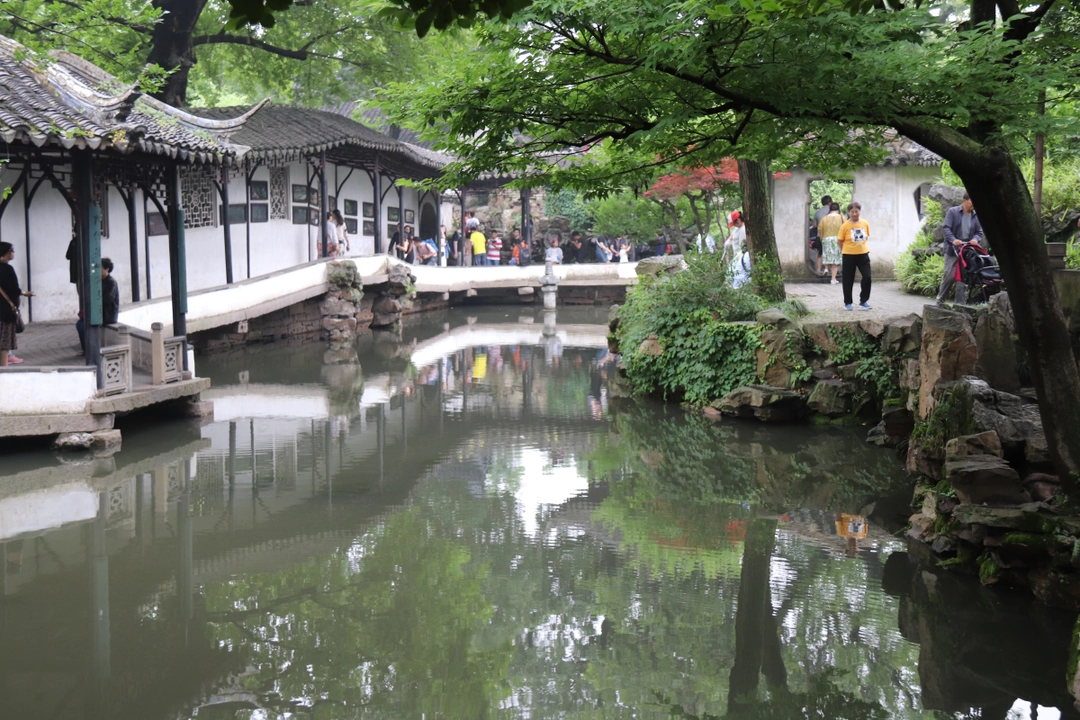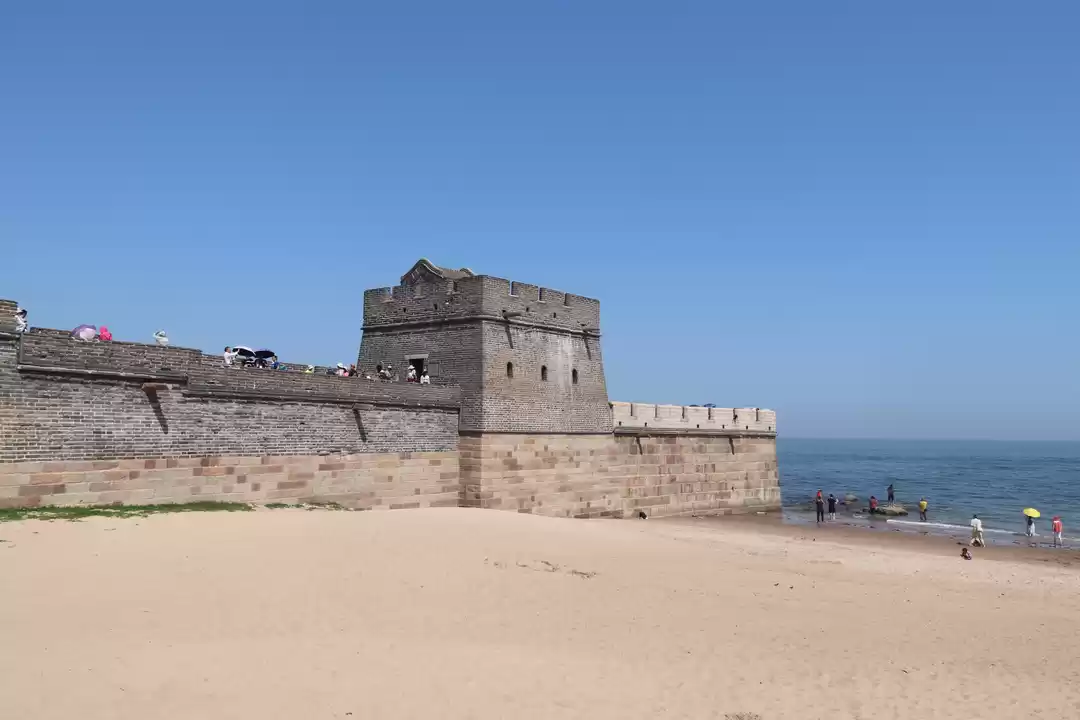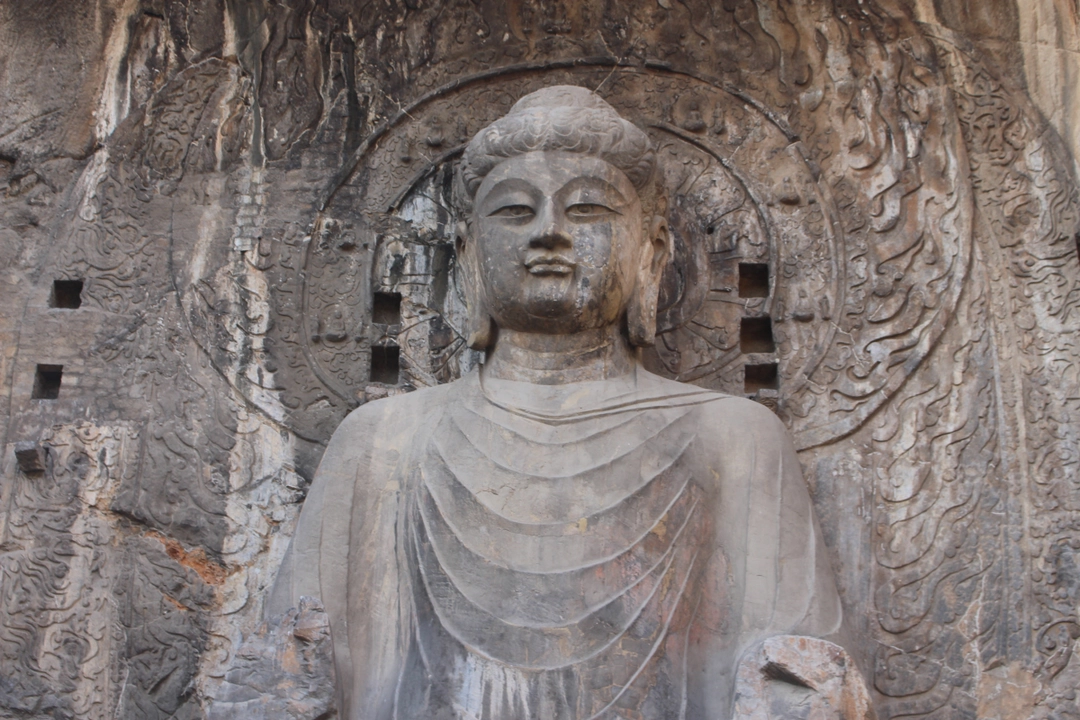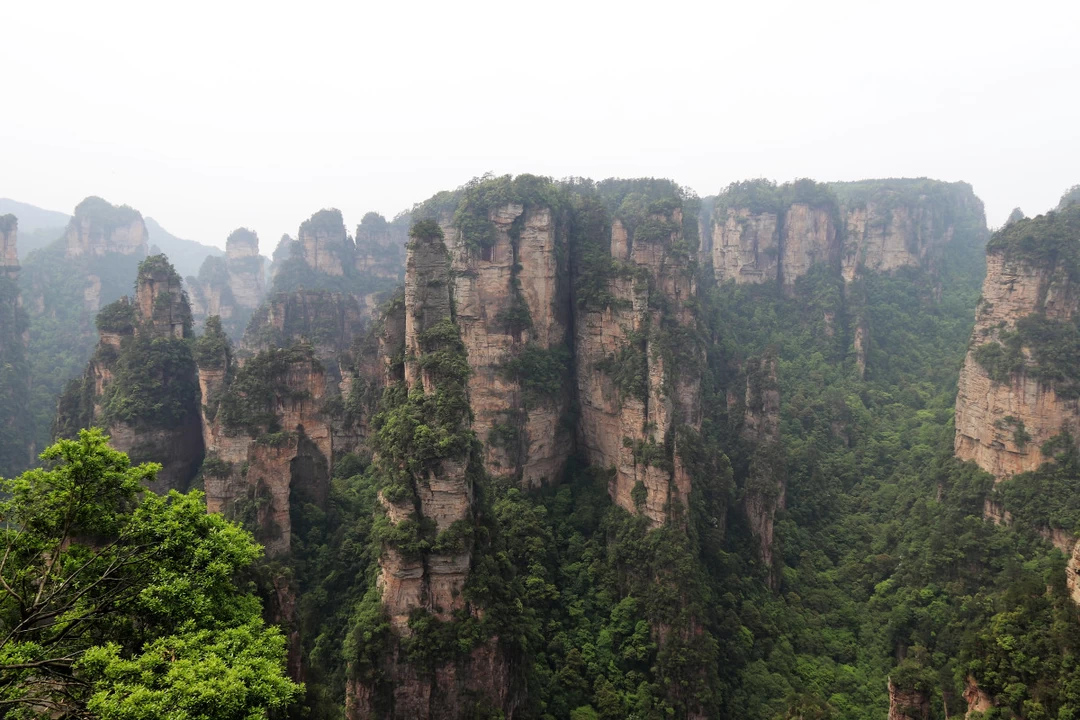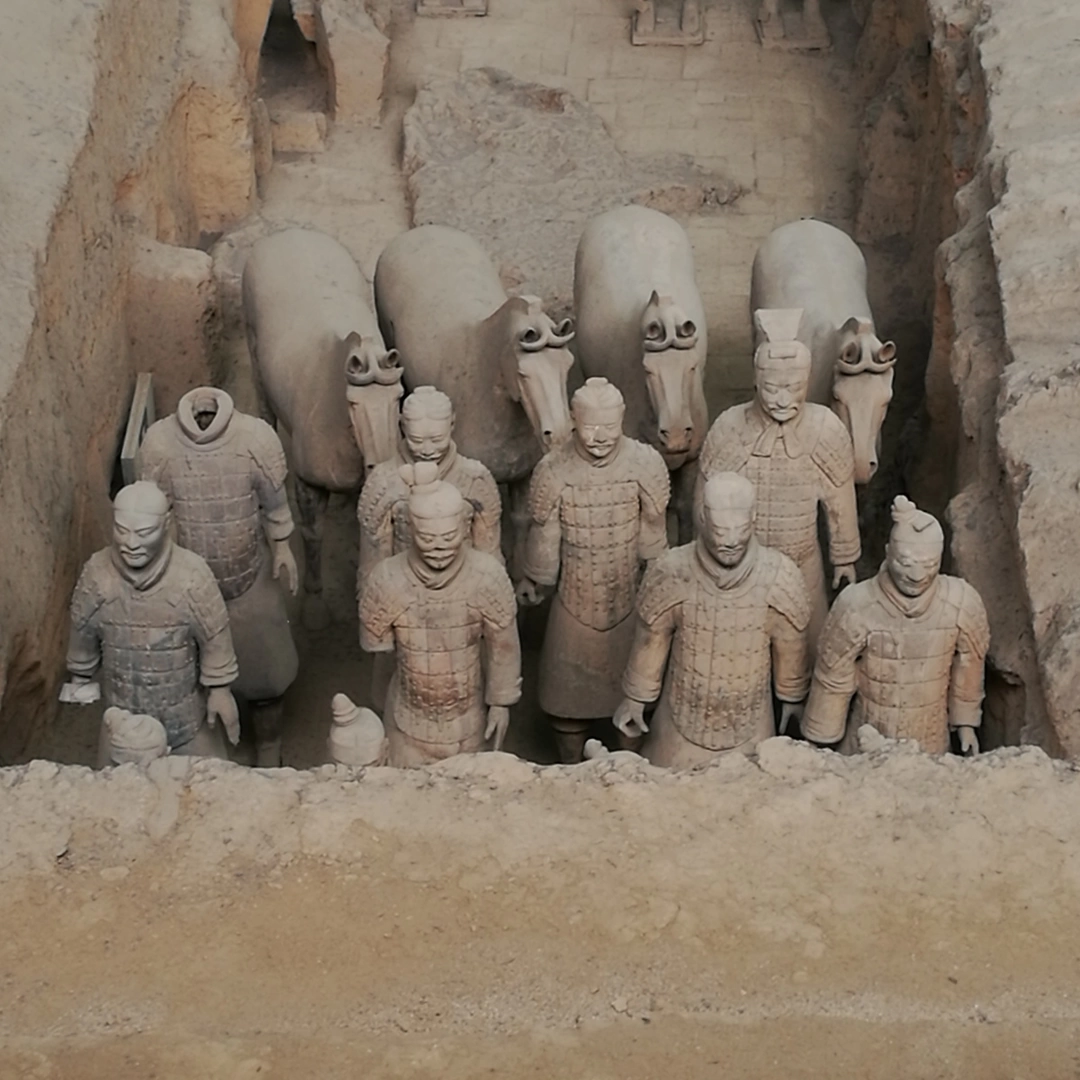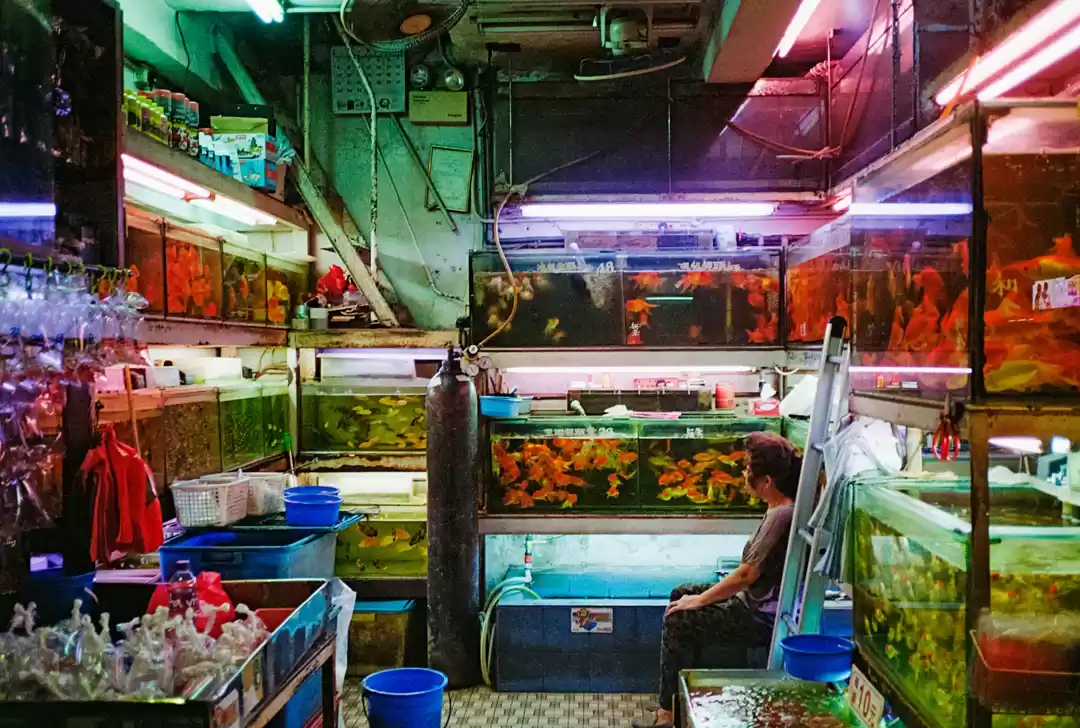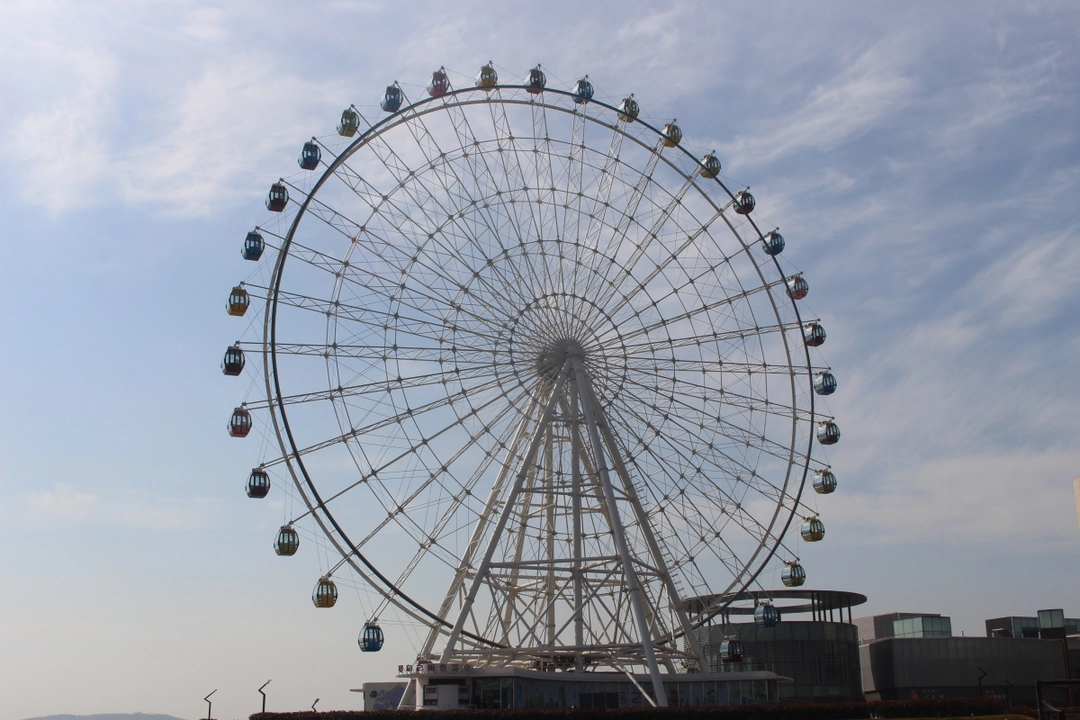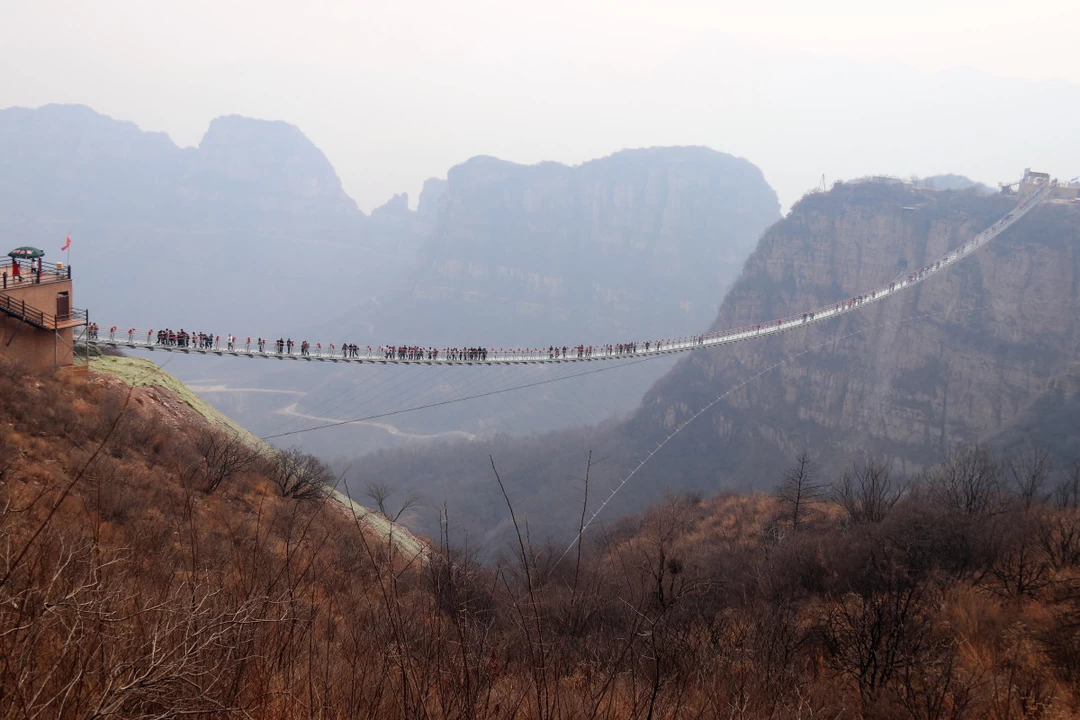
As the October holidays were approaching, I had to find a way of spending time usefully. Initial plan was to visit Himalayas, but it looked difficult looking at the cost of travel. I had two options with FCN (Foreigners China), the Silk Road and the Changbai Mountain. Silk Road was going to be longer journey, and hence I decided to go to Changabai Mountain. As always, booking with FCN was easy. In few days, my colleague Dave also decided to join and booked for the trip. This was going to be a stretched bus journey. I did some shopping at Decathlon for a couple of cargo pants and a pair of comfortable shoes.
The trip was for six days and five nights, and the journey by a big bus. We were 42 travellers altogether. 34 Were from FCN and 8 from a sister Chinese company, the Elephant Travels. We were to start on Sunday, 1 st October, 2017 from the Huixinxijainankou Subway station at 6.30am. Dave and I left home at 4.30 am, went to Songjiazhuang by taxi and took subway from there. We were at the destination by 6 am. Looked like couple of people were delayed, and by the time all reached, it was 7am, and we left in a few minutes after that. The FCN team had Grace as the main leader with Stella and Goksu as the other leaders, and Elephant travels had Amy (Shu Ya) and the photographer Xiaoxuan.
Day 1, Oct. 1: The journey was like we had never seen before. There were lot of cars and other vehicles on the road and we encountered frequent traffic jams due to accidents and other reasons. There were also long queues at service areas and gas stations. As per the schedule, we were supposed to visit the Bijia Mountain on the way to Panjin. But the slow traffic made the plans to be changed and Grace said we can do Bijia Mountain on our way back and go straight to the hotel. We played some games on the bus.
It was 9.45pm by the time we reached Garden hotel at Linghai. The city of Linghai looked big, but it was quite late. We were on road for almost 15 hours! Dave and I packed some food from the KFC that was next to the hotel. Garden hotel was luxurious and the rooms were quite large and comfortable. Only issue was not getting hot water for shower.
Day 2, Oct. 2: Next morning we were to have breakfast at 7am and start to the red beach at 7.30. The Chinese breakfast spread was nice. Few people were late for breakfast and we left the hotel around 8.30am (instead of 7.30am). The journey to the red beach was through very beautiful places with many streams and large corn fields. Grace told the mythological story of the red beach, which goes like this:
In ancient times, there was a Dragon king at the Bohai Sea. He had a beautiful daughter. Once he goes to meet the Jade emperor at heaven, leaving behind his daughter at the sea. She gets attracted to a boy who plays flute every night and meets him regularly. One day, she wears red dress and goes to meet the boy and they get married. When the Dragon King comes back, he becomes furious to see that his daughter has married a fisher boy. He gets the boy killed. The daughter cries so much that her tear makes the sea red.
Grace also told the stories about the Dragon King and Mazu, who is the goddess of the sea:
There are two gods in Chinese culture. One is dragon king, and the other is Mazu. Unlike other gods, Mazu was human. When she was 13years old, she found she was different from others, as she had the magic power. One day, her dad and brother went out to fish. After they left, she cried 'daddy dead, and elder brother alive'. And finally only her brother came back. So there are over 1,500 active temples and 100 million devotees for Mazu. People who live by fishing always pray for luck. The Chinese goddess Mazu has many names and titles. Known in different regions as Matsu, Ma-Tsu, A-ma, Tianhou, and other names, with numerous titles that include "Motherly Matriarch", "Kuan Yin of the Southern Sea", "Daughter of the Dragon", and "Empress of Heaven". Although some experts feel she may be a version of the older goddess Kuan Yin (who is better known in most western countries), Mazu is deeply rooted in the hearts of her people, especially coastal areas in the East, and is best known as the "Goddess of the Sea". In folk tradition it is believed that, when you are facing great difficulty, you can call her by the name "Mazu" and she will immediately come to your rescue. If, however, you address her as the "Empress of Heaven", she will have to take time to put on her fine clothing and will be delayed in coming to your aid! (Taken from http://www.goddessgift.com).
However this is the story from Daoism. In history, Mazu's real name is Lin Mo, who was really smart, but just a normal girl. When she died, people built a temple for her. With time, Mazu becomes a Chinese culture.
The Chinese goddess Mazu originated with the elevation of a young woman named Lin Mo Niang who had performed numerous miracles during her short life. A kind-hearted girl with a vast knowledge of Chinese medicine, she was known as a healer, curing the sick while teaching the people how to prevent illness and injury. Many of the miracles she performed involved quelling storms at sea, so it is hardly surprising that she is known as the protector of all seagoing people. Mazu was born on a small island in the straits of Taiwan off the coast of southeastern China in 960 A.D. Her middle-aged parents, the Lins, already had six other children, only one of them a girl. Her mother prayed to the goddess of mercy, Kuan Yin, for another daughter. Hearing her fervent prayers, Kuan Yin came in her dream, giving her a flower to eat that caused her to conceive the next day. The baby was named Lin Niang (in China the family name, or surname, comes first). At her birth the room was filled with a brilliant light and the fragrance of fresh flowers. As a newborn, she was strangely silent. Alert and healthy, she did not cry at all during the first month of her life, leading her parents to nickname her Mo (which means "silent"). As she grew it quickly became apparent that Lin Mo was gifted with remarkable intelligence and a photographic memory. Supernatural powers were soon to become apparent as well. One legend attributes her mystical powers to an event that took place when she was fifteen. Going with her friends to check out their new dresses in the reflections of a pool, a sea creature erupted out of the water and was holding a bronze disk out, offering it to the girls. Terrified, the others ran away, but the brave Lin Mo calmly accepted the bronze. From that moment on, she began to display unusual powers that grew daily and made her a legendary figure at a young age. Already held in high esteem by the villagers for her healing, Lin Mo could now predict changes in the weather and could announce when it was a safe time for sailors and fishermen to set out to sea. To this day sailors from places as far-flung as China, Okinawa, Taiwan, Thailand, Vietnam, Malaysia, and even San Francisco pray to Mazu before setting out and give thanks to her upon their safe return. Marine folklore is filled with tales of catastrophes averted when the goddess Mazu, dressed in red, appeared to sailors as a warning that unseen storms were rising and that their voyages should be postponed. Many sea goers have narrated times when the goddess Mazu appeared as a bright light on their troubled ships, arriving just in time to calm a storm and save their lives. Some said that Lin Mo could actually ride clouds across the ocean, and appear in the flesh to rescue them. Lin Mo's death, at the age of 28, was as significant as her birth. One day she simply told her family it was time for her to leave and that she must go alone. Her neighbors and family watched as she walked to the top of a mountain near her home. Reaching the top, Lin Mo was encircled by clouds of dense fog, and to the accompaniment of enchanting celestial music, was carried into the heavens in a golden glow of light. Where she had been last seen, a great rainbow appeared. In Chinese mythology the rainbow signifies the presence of a dragon, a symbol of great blessing and good fortune. The dragon is a serpent that quenches its thirst in the sea and, as a sky dragon, unites heaven and earth. The rainbow also has special significance in Taoism - the colors representing the five Buddha families, with the color orange associated with the Bodhisattva, those who have achieved enlightenment but choose to remain on earth to be of service to their fellow humans (Taken from http://www.goddessgift.com).
That was some Chinese folklore. Let us come back to the trip. We reached the gate of the red beach by 10.40am and Grace got the tickets.
The Red Beach: The Red Beach (红海滩), located in Dawa County, Panjin, Liaoning, China, is famous for its landscape featuring the red plant of Suaeda salsa (碱蓬草). It is based in the biggest wetland and reed marsh in the world. There are three main sightseeing areas and visited all the three. The place is so large that we had to travel by bus between each scenic area. The places are well designed so that people can get the best view. Normally a long winding wooden bridge that runs through the stretch allowing people to have a good all-round view of the beautiful red beach. There are beautiful scarecrows made with coir all along the paths. The place also had many birds which is not a common sight in other places of China that I have visited. As it was a holiday, crowds were large and people were enjoying taking pictures with the scenic backgrounds and the interesting figures.
We left the scenic area around 2.20pm and proceeded towards Jilin. The distance is 555 kms and was estimated to take about seven hours. Once again, though the long journey was tiresome, the scenery around was awesome. There were large paddy fields all along the course. We could also see the beautiful Dalian river flowing along. My lunch that day was boiled corn. It was 10.20pm by the time we reached the Jilin international hotel at Jilin. Grace shared the Wi-Fi password, but we realized that the net was weak in most of the hotels. Grace also shared the next day's program and the temperatures to be expected for every city.
It was quite late for dinner, but Grace found a place where we had dinner with dumplings and vegetables.
Day 3, Oct. 3: The breakfast time on the third day was 8 to 8.30am, which people liked. Here the breakfast had some western bread and jam too. We left Jilin at 9am to proceed towards the Red Leaf Valley at Jiaohe. We reached the place around 12.30pm. There were lot of people there ant the atmosphere was festive. We roamed around for some time clicking pictures of the autumn colors. There were supposed to be two places of interest: Qingling Waterfalls (the second biggest waterfalls in Jilin) and a lake, after some confusion and consultations, it was decided to drop the waterfalls and proceed to the lake. There were many street vendors selling interesting things from fruits, dry fish to honey and ginseng. I bought some Guniang and small apples, and also enjoyed some soup noodles. We walked again the same way to get to the bus and left for the lake. It took about half an hour to reach and we were at the lake by 2.45pm. The lake was very beautiful and fortunately there were not many people here. We spent about half an hour taking pictures and looking around, and got back to bus to start for Erdaobaihe Town, our next stop.




Once again a journey of about 5 and a half hours, and we reached our hotel "Changbai Mountain Forest Guesthouse" at Erdaobaihe Town at 8.45pm. It was early compared to the two previous days, but nowhere close to what was mentioned in the initial schedule. Grace gave the next day's schedule, warning people that the Mountain was closed to visitors the previous day at 11am due to excess crowd. That evening we had a hotpot dinner at a place suggested by Grace. Dave and I usually went with Grace and Goksu for dinners as we enjoyed their company and it helped to communicate with the restaurants. The hotpot dinner was good. We came back to the hotel by 10.20pm and rested.
Day 4, Oct. 4: Next morning Dave and I went out for a walk. The hotel was surrounded by lot of activity and had supermarkets nearby. We came back for an early breakfast. Here, few tables were dedicated for our team with a good spread of food already kept. We left the hotel at 8am (which I felt was an improvement). We were at the gate of Changbaishan by 9.15, and there was long queue ahead of us. An hour later, we could get the bus that would take us to the point from where we had to climb the steps. We took a group picture before getting in the bus queue. After that, the group got spread out depending on the bus they caught, and there were unbelievably large crowds of people everywhere. The place we were climbing was the western slope of Changbaishan. It is said that the northern and western entrances are separated by a distance of 100kms.The mountain also extends into North Korea and the border seems to be not well marked. Changbaishan was long considered to be a source of both the Manchurian and Korean cultures. Climbing the mountain was considered taboo for most of China's history, with violators often being beaten to death. It is a dormant volcano with a lake in the crater named Tianchi Lake and this lake is the source of the Songhua River. Last volcanic eruption was in 1702 A.D. Changbaishan is also where two other major rivers: Tumen and Yalu and many minor rivers are born.

The bus journey started at 10.25am and was for about 40 minutes. It was uphill and winding. The scenery on either side was breathtaking with some patches of snow and small frozen waterfalls on the way. There are 1450 steps to climb on the western slope and there are two tracks for going and coming. The steps were packed with people and we could hardly pace. Most of us were on top by 11.30am. To catch a glimpse of the Tianchi Lake was difficult due to the large crowds, but we managed to move to the front and stay there for some time.
The Tianchi (heavenly) lake was indeed the most beautiful part of the Changabai Mountain. At 2192 meters above sea level, it is 13 km in circumference but cannot be walked around owing to the border with North Korea (Mount Paektu). It is about 10 square kilometers in area. The Tianchi Lake is thought to be house for mythical monsters, as described in old fables. The lake provides different views during different seasons, being a snow pool during winter and a charming blue reservoir during summer. I bought a set of post cards with beautiful pictures of the mountain in different seasons. There were many photo sessions once we finished viewing the lake. We started walking down at 1pm and caught the bus to Jinjiang Grand Canyon.
There was some confusion as people were spread out, but we all managed to get on to the right bus and reach the entrance of the Grand Canyon at 2.15pm. Lunch that day was fruits eaten on the bus. Jinjiang Grand Canyon is believed to have been formed due to erosion caused by an earthquake that occurred in combination with a particularly violent volcanic eruption below Lake Tianchi. The subsequent massive overflows from Tianchi Lake over a long time, has caused the gorge, or Grand Canyon, as it is today. It was a couple of hours walk through a very beautiful landscape that consisted of deep valleys with tall rocks (lava stones) of different shapes. It seems that the rocks are named based on the respective images that they project, such as elephants, camels, seals, peacocks, etc. The wooden walk path had colorful trees also on either sides and had squirrels and different birds. After walking through the path for about two hours, we all assembled to catch the bus that took us to the place from where we had left in the morning. Though over a period of time, we all were there near the FCN bus and proceed towards out next destination, Baishan city.


The journey was about 3 hours. It was a moon festival day and the FCN leaders distributed moon cakes. Grace told the story of moon festival significance, while Jerrie gave a slight different version of the same story. She also beautiful sang a song about the moon festival. The two versions of the story were similar to the following from Lihui Yang's Handbook of Chinese Mythology.
In the ancient past, there was a hero named Hou Yi who was excellent at archery (You can read about Hou Yi in my blog of the Long Island trip). His wife was Chang'e. One year, the ten suns rose in the sky together, causing great disaster to people. Yi shot down nine of the suns and left only one to provide light. An immortal admired Yi and sent him the elixir of immortality. Yi did not want to leave Chang'e and be immortal without her, so he let Chang'e keep the elixir. But Peng Meng, one of his apprentices, knew this secret. So, on the fifteenth of August in the lunar calendar, when Yi went hunting, Peng Meng broke into Yi's house and forced Chang'e to give the elixir to him. Chang'e refused to do so. Instead, she swallowed it and flew into the sky. Since she loved very much her husband and hoped to live nearby, she chose the moon for her residence. When Yi came back and learned what had happened, he felt so sad that he displayed the fruits and cakes Chang'e liked in the yard and gave sacrifices to his wife. People soon learned about these activities, and since they also were sympathetic to Chang'e they participated in these sacrifices with Yi.
Another common version of the myth: After the hero Hou Yi shot down nine of the ten suns, he was pronounced king by the thankful people. However, he soon became a conceited and tyrannical ruler. In order to live long without death, he asked for the elixir from Xiwangmu. But his wife, Chang'e, stole it on the fifteenth of August because she did not want the cruel king to live long and hurt more people. She took the magic potion to prevent her husband from becoming immortal. Hou Yi was so angry when discovered that Chang'e took the elixir, he shot at his wife as she flew toward the moon, though he missed. Chang'e fled to the moon and became the spirit of the moon. Hou Yi died soon because he was overcome with great anger. Thereafter, people offer a sacrifice to Chang'e on every fifteenth of the eighth lunar month to commemorate Chang'e's action.
The journey was pleasant, and we reached our hotel, Huixing at Baishan at 7.45pm. Grace was particular that we all should have at least one dinner together and tried to find some place. As it was moon festival, many restaurants were closed and there was no place that could hold a group of our size. We explored the restaurant in our hotel, but they were also closed. After many efforts, they found a barbecue place that had the capacity. Most of us except few were there and the party went on till 11.45pm. The beer in the restaurant was just 1RMB per bottle J. Some of the people wanted to look for a KTV after that and we walked in the deserted streets for some time. Dave and I decided to comeback after walking for about half an hour and the others said that they came back after some more time as they couldn't find the place.


Day 5, Oct. 5: Next morning we had Chinese breakfast of different kind of steamed Man tou, vegetables, millet soup and boiled egg at the 25 th floor restaurant of the hotel and left at 8am. It was very scenic drive to the next spot, the sky watching caves.
We arrived at the sky watching caves at 11am and took the customary group picture. The Wangtian caves at Benxi in Liaoning province are longest caves in the north. They are called "sky Watching caves" as there are opening through which the light enters to the cave. The main cave is 5.6 kms long. It also has three underground rivers 4 kms long. The main cave shapes like verandah, hall and labyrinth. The stalactite here forms many interesting shapes and are named after the shapes. It was indeed an amazing experience to go through the caves. The lights in the caves are in the shapes of different insects, and in many places color lights are added to create different effects. We spent almost one and a half hour walking through the caves and came out. Some of us came down via Ziplining, which was thrilling.

After coming down, we went around for some time and tried the local food. I had a corn and two boiled Goose eggs. I was eating Goose eggs for the first time. I can't say it was tasty, but it was indeed filling.
I feel we spent long time down there. We left for the next destination only by 2.30pm and reached the hotel at Dandong at 5.40pm. The hotel Changyuan Shang wu bin guan was comfortable. It was already dark and chance of seeing across the border in day light was not possible. We met at the reception at 6pm and proceeded to walk along the Yalu River. Boating on the river was not possible as it was late.
Dandong is the largest Chinese border city, facing Sinuiju in North Korea across the Yalu River, which defines the Sino-North Korean border. It was quite a long walk from the hotel and the view of the bridge was awesome. Dandong's Sino-Korean Friendship Bridge was bombed by the United States during the 1950-51 Korean War, as was an older iron bridge leading to North Korea. Even though the Sino-Korean Friendship Bridge was rebuilt, the remains of the Japanese-built iron bridge were left and now serve as a war monument. The other bridge is now used only for trade. We had police checking for people's IDs during this trip.
The view of the river and the town across in moonlight was spectacular. Close to the bridge, there is a wharf with lot of activity around. We spent some time clicking photos around the bridge, and then followed the location shared by Grace to a Korean restaurant. The food was interesting and delicious. We had to squat on mats and eat. I particularly liked Bibimbap, r ice with vegetables and meat with a sunny side up egg on top.We came back to the hotel by 10.30pm and rested.


Korean food for dinner
Day 6, Oct. 6: It was the last day of our trip. As we couldn't see the bridge and across in the daylight, Grace thought we should go through the place and spend a few minutes near the bridge. Once again, after lot of persuasion, we left at 8am and the bus dropped us near the wharf. We took pictures there. Though we thought we will be there for 15 minutes, we left only after an hour. The journey took longer than expected, and we arrived at the beach at 3.30pm. It was high tide, the natural bridge between the mainland and the mountain island was under water. Shu Ya led us to the place where we caught the boat. Five of us were in the boat and each trip was 100RMB together.
Bijia Mountain is located on the coast of the Pohai adjacent to Jinzhou Port (锦州港). The total area of the spot is 8 square kilometers, among which the land area of the scenic spot is 4.72 square kilometers. The mountain has three peaks, one is higher and the others are lower, it gets the name for it shapes like a pen rack (bijia in Chinese). Tian Qiao, the sky bridge, is the path that cooects the bijia mountain to the mainland. So the mountain is also called Tianqiao Mountain (天桥山).
The legend of Tian Qiao: Long ago, three fairies went to human's world from heaven to take people's sacrifices every Ghost Festival. One year, when flew to Pohai Bijia Mountain, they found the place wonderful and people here are kind and lovable. The fairies saw that the island and the mainland are separated so they decided to build a bridge to link them in order to pay back. They used magic power to blow the sand and pebbles together to form a dyke. When doing so, they woke up an evil dragon who liked to swim around the island, the dyke they were making blocked his way. So they started a fight. Finally the dragon lost, but they spent too much time on it and they had to go back and left the unfinished dyke behind. Therefore, when tide came the bridge disappeared and when it went out the bridge turned up. (Taken from http://www.foreignercn.com/)
Bijia mountain is a place of Taoism. From down to top builds Zhenren Temple (真人观), Luzu Pavilion (吕祖亭), Taiyang Palace (太阳宫, the Sun Palace), Leigong Temple (雷公祠, the Thunder chief Temple), Dianmu Temple (电母祠, Temple of Lightning Goddess), Wumu Palace (五母宫), and Sanqing Pavilion (三清阁). Among them, Sanqing Pavilion is the most famous one and is a 'must go' spot. It is a completely stone-made but wooden-like six stories building without a single nail standing at the top of the mountain, from which visitors can have an overlook of the beautiful, vast sea. There are many statues of the Buddha and Taoist and Confucian saints in the pavilion. On the top floor there is a shrine to the God of the Creation, Pangu (盘古).
Our boat ride was thrilling; with the boatman seeming to be in a great hurry. One we reached in, we went upwards seeing the different spots and appreciating the scenery. Around 4.45pm, some of us were at the highest point, on the Sanqing Pavilion. It was very windy there and I had the FCN flag with me, which I had to secure with great effort. Around 5pm we were back at the dock, it was getting dark and the number of returning boats was less. We returned to the mainland and left for Beijing at 5.45pm.

The distance to Beijing was ~ 500kms and the traffic was very bad. We kept chatting in the group, shared puzzles to kill time. We reached Huixinxijienankou at 1.35am, after almost eight hours. I took a taxi with Dave, Hannah and Megan and reached home 2.25am.
I realized later that the SD card of my camera using which I had taken more than 1000 photos, got damaged when I shifted it back to the bag while replacing with a new one. Thus I lost all my cherished camera pictures. Fortunately I had the mobile phone as a backup and most pictures in this blog are from the phone.
The trip to Changbaishan gave me an opportunity to see many beautiful places and to make new friends. Though long bus journeys were tiring sometime, it was a very rewarding experience. The FCN organizers led by Grace were very kind and took great care of every one. Spending six days with people from many different countries and cultures was also an enriching experience. A non-holiday time would be certainly great to revisit the places in solemnity.















